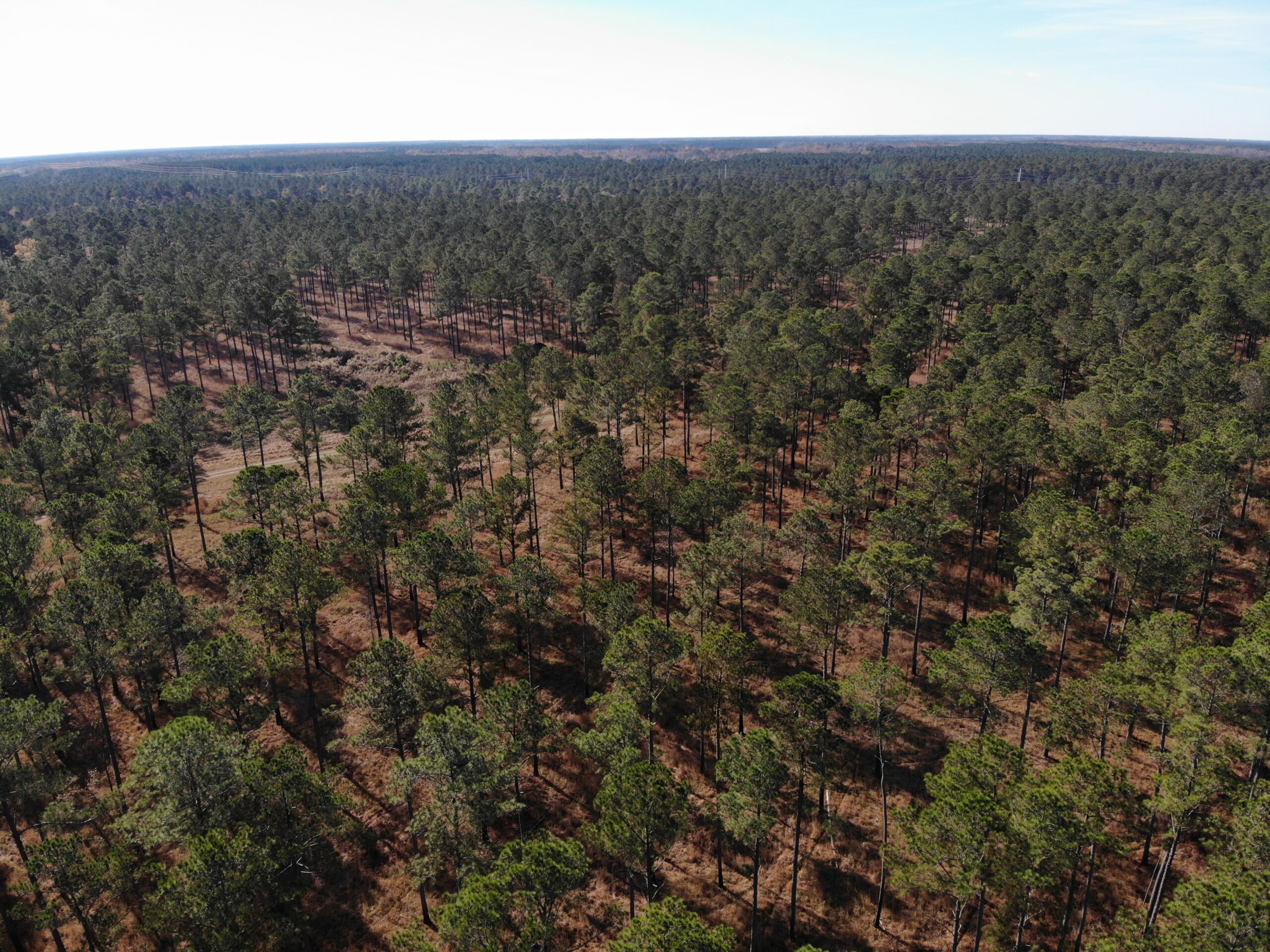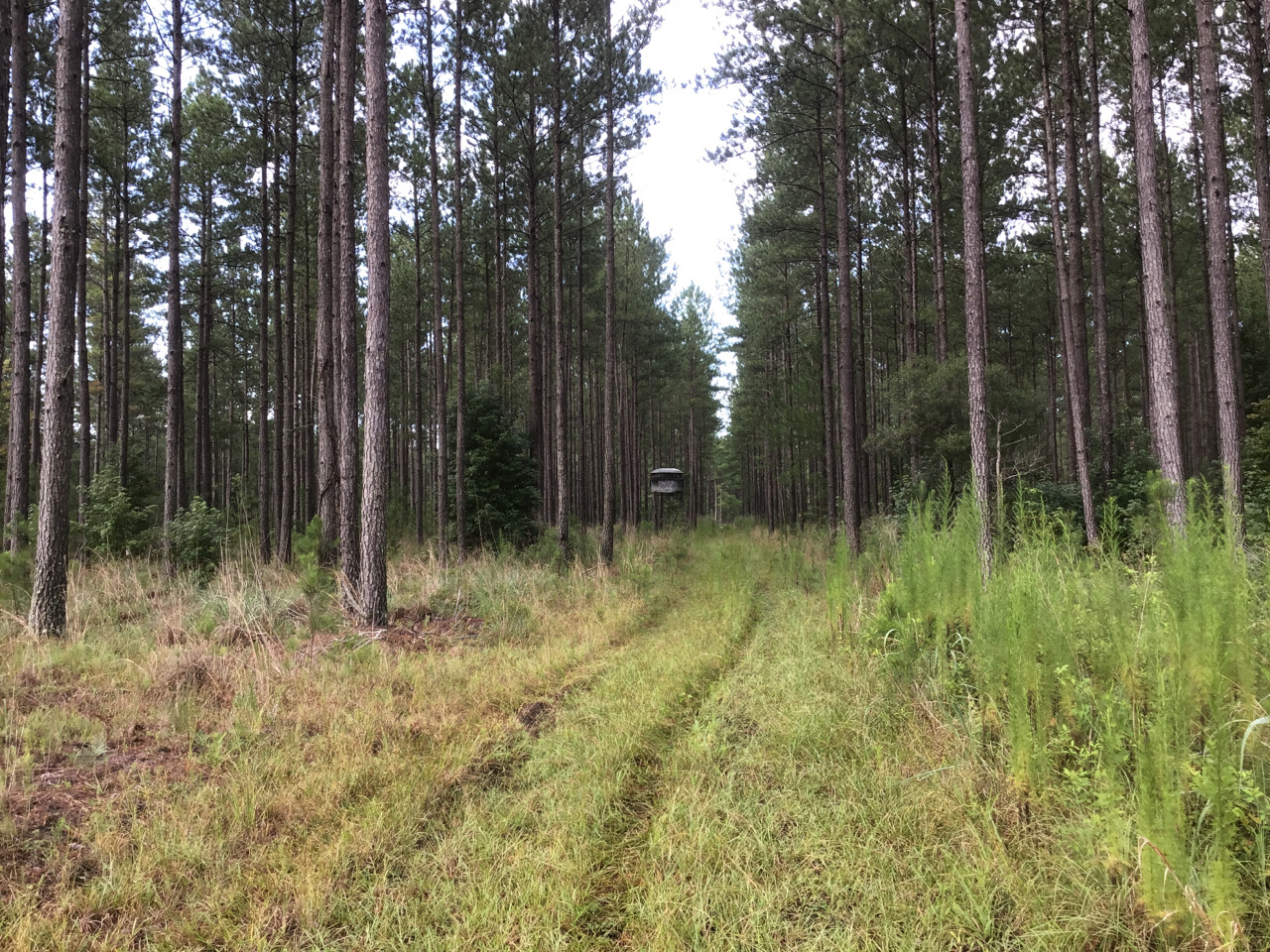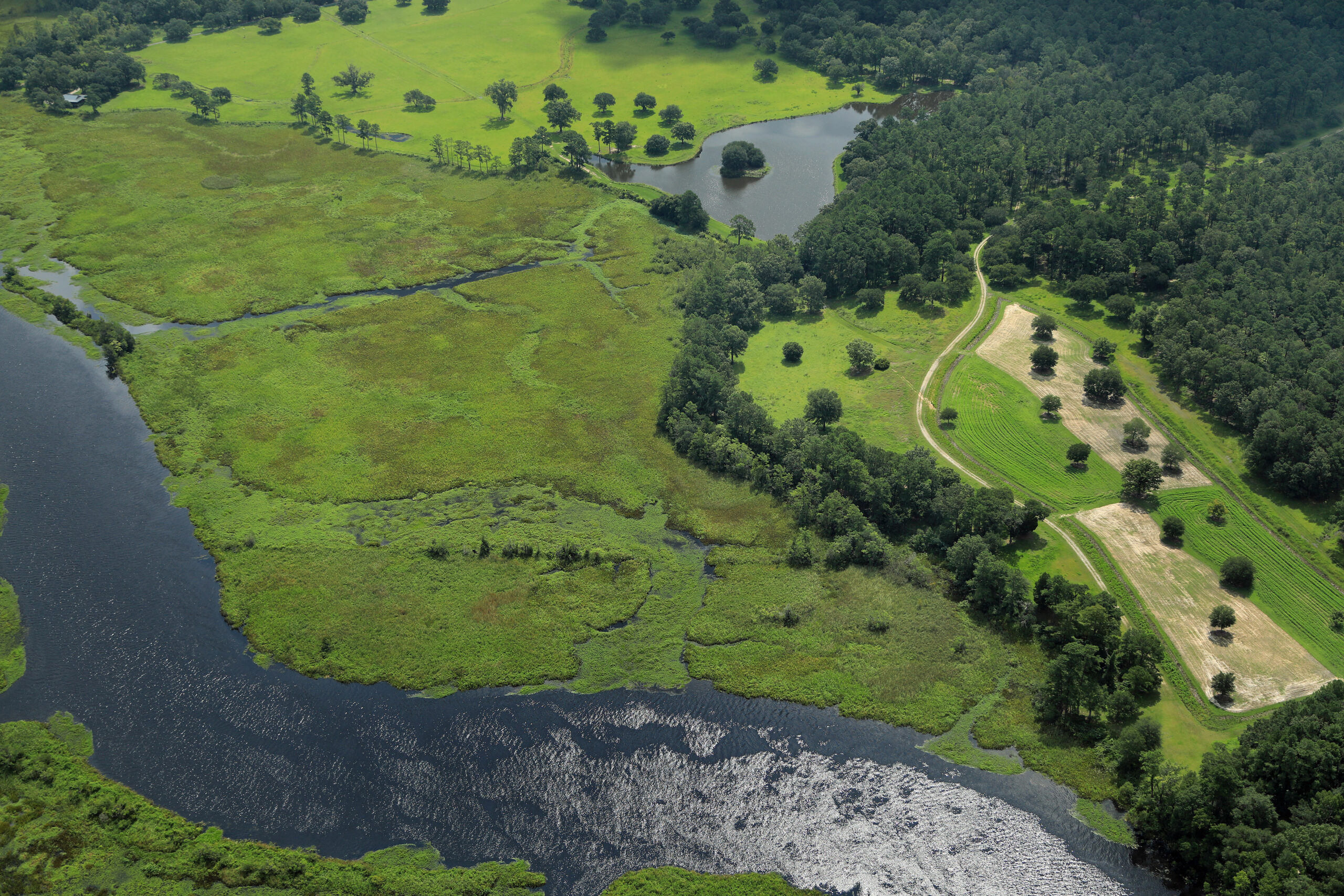The world is your oyster, or at least it feels that way for spat-baby oysters that float through the water looking for their new home.
Lowcountry Land Trust’s Outreach and Events Coordinator, Jennifer Welch, recently had the pleasure of volunteering for a collaborative oyster reef restoration effort put on by Rheos (an annual corporate sponsor of Lowcountry Land Trust), South Carolina Department of Natural Resources (SCDNR), and Causal Crabbing with Tia. The goal: recycle used oyster shells to create new habitats for juvenile oysters and strengthen the Lowcountry’s diverse ecosystems.
If you’re not new to the Lowcountry, then you might be familiar with SCDNR’s South Carolina Oyster Recycling and Enhancement (SCORE) program, a community-wide initiative to prevent discarded oyster shells from restaurants, roasts, and individual households from going to the landfill, putting them back into the Lowcountry’s waterways instead. These shells won’t reproduce into new oysters, but they will provide a substrate, or foundation, for new oysters to grow.
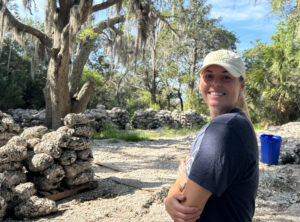
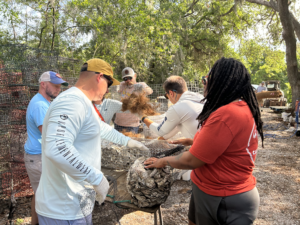
Left: Jennifer Welch, Lowcountry Land Trust’s Outreach & Events Coordinator; Right: Team members of Rheos, Vapor Apparel, Casual Crabbing with Tia, and SCDNR.
The understanding of oysters is as ever-changing as the tide.
From an outsider’s perspective, one may think they’re just razor-edged, salt-water mollusks. However, oysters are a keystone species – an organism that helps define an entire ecosystem. Without keystone species, that ecosystem would drastically differ or cease to exist altogether. Adult oysters can filter up to 50 gallons of water daily, removing sediment and pollutants from waterways. This natural process positively impacts the health of the Lowcountry’s estuaries, which are some of the most productive ecosystems in the world, and in turn, allows ecosystems that define the region to continue thriving. In addition, oyster reefs stabilize exposed marsh, prevent bank erosion, and create shoreline barriers.
The restoration of local oyster reefs and Lowcountry Land Trust’s land protection efforts are interconnected in their shared goal of preserving and enhancing coastal ecosystems. By safeguarding areas upland, Lowcountry Land Trust ensures the protection of water quality and the long-term viability of oyster reefs, thereby maintaining the natural processes that support oyster growth and the ecological functions they provide, such as shoreline stabilization, flood mitigation, and habitat provision.
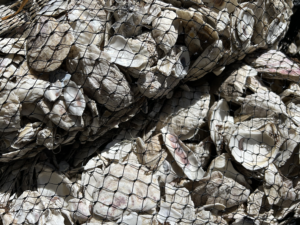
Without oysters, the Lowcountry’s land, water, and quality of life would vastly differ.
Due to the importance of these tiny creatures, maximizing impact and optimizing surface area is essential. Michael Hodges, lead field biologist for SCDNR’s SCORE program, has redesigned the prior artificial reef-creation method of placing bags composed of recycled oyster shells along the banks of Lowcountry rivers and streams. Using this former method, oyster shells in the center of the bags were being wasted as the spat, or baby oysters, could not attach to them. Hodges’ new idea uses metal netting, similar to a crab trap, to form a rectangular cage with a hollow center. Coconut coir, the natural fiber extracted from the outer husk of a coconut, is then packed into the hollow area of the wire reef to help stabilize the shells while allowing essential water flow for these planktonic oysters. Just one of these cage reefs is as effective as six bags and uses only one-third of the recycled oyster shells.
This innovative thinking is some of the first of its kind and echoes South Carolina’s coastal communities’ success in rebuilding the oyster population. There are over 100 sites of these artificial oyster reefs spanning roughly 200 miles of the Carolina coastline – and they have all been constructed by community volunteers. Joining Rheos, South Carolina Department of Natural Resources (SCDNR), and Causal Crabbing with Tia for a morning of artificial reef construction energized Jennifer. She had little knowledge of what the volunteer event would entail, but after a brief overview of the SCORE program and some friendly competition, she left with a newfound passion.
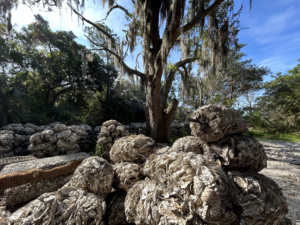
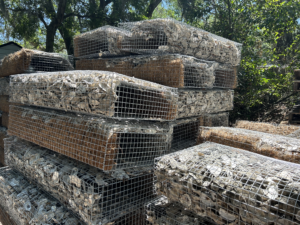
Left: SCDNR’s SCORE headquarters on James Island; Right: Oyster shell cages constructed by volunteers.
You may be thinking, aw shucks, how can I get involved?
The ability to intimately connect with and enhance one of the Lowcountry’s most vital ecosystems seems like an exclusive opportunity, but the reality is that one can easily get involved. Community programs like SCORE provide volunteer opportunities for groups or individuals of all ages, educate the public, restore natural resources, and increase the quality of life in the Lowcountry.
The South Carolina Oyster Recycling and Enhancement (SCORE) program continuously seeks individuals, schools, organizations, and businesses to volunteer! If building manufactured wire reefs isn’t your thing, SCORE has opportunities to assist with collecting recycled oyster shells, providing community education, and building/monitoring shoreline reefs. Don’t forget to recycle your oyster shells, too! You can find drop-off locations here.
Thank you again to Rheos, South Carolina Department of Natural Resources (SCDNR), and Causal Crabbing with Tia for inviting Lowcountry Land Trust to participate in your collaborative reef-building event.
Supporting Links
Charleston, SC Oyster Shell Recycling Program


